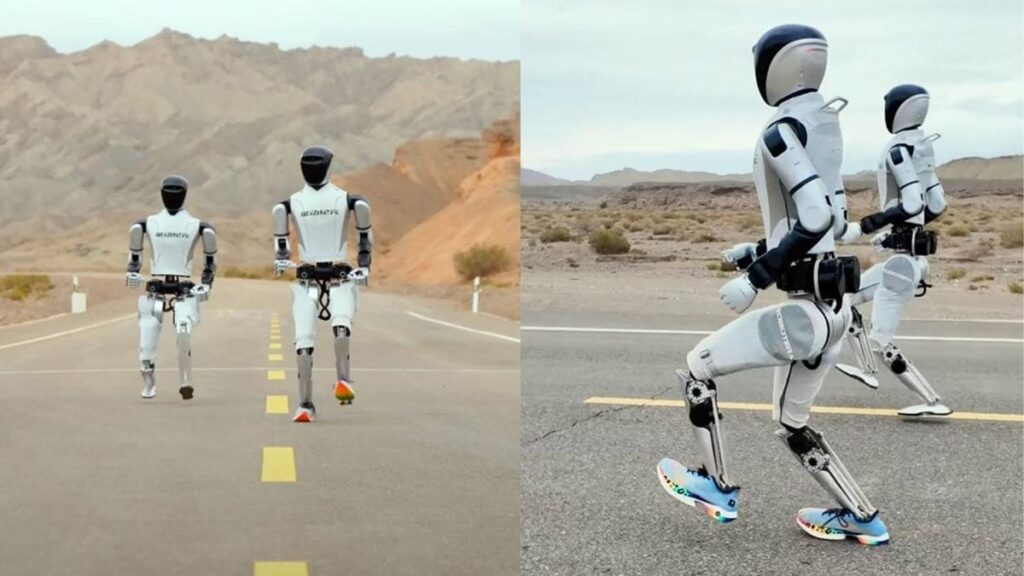Meet STAR1: The World’s Fastest Humanoid Robot
In the ever-evolving landscape of robotics, Chinese startup Robot Era has just made a mark by unveiling what it claims is the world’s fastest humanoid robot, aptly named STAR1. With this breakthrough, STAR1 has officially surpassed notable contenders like Tesla’s Optimus and Boston Dynamics’ Atlas in the race for speed.
Speedy Stats
Standing at a height of 5.6 feet and weighing around 143 pounds, STAR1 is designed for agility and speed. It can sprint at an impressive 8 miles per hour (approximately 13 km/h), setting it ahead of previous record-holder Unitree’s H1, which clocked in at 7.4 mph. But how does this new player prove its prowess?
To showcase its capabilities, Robot Era released a thrilling video of two STAR1 units dashing across the rugged Gobi Desert in China, even getting one dressed in sneakers for a quirky touch. This lively display not only emphasized its speed but also showcased its ability to traverse various terrains, from smooth pavements to sandy expanses.
Built for Performance
What powers STAR1? It boasts high-torque motors combined with advanced AI algorithms, enabling it to operate seamlessly on a range of surfaces like roads, sand, and grassland. That’s not all – STAR1 reaches its maximum speed in roughly 30 seconds, a feat that underlines its agility.
The true magic lies in its advanced computing capability. With hardware designed to process an astounding 275 trillion operations per second, STAR1 outshines the computational power of most modern laptops, which typically handle between 45 to 55 trillion operations per second. This significant processing capability allows the robot to perform real-time decision-making, adapting to its surroundings at lightning speed.
Motion Mastery
Another standout feature is STAR1’s “12 degrees of freedom,” which refers to its joints and movement capabilities. This design enhances its mobility and efficiency, enabling smooth navigation over all types of terrain, including uneven surfaces. It has proven to maintain stability even while sprinting, making it a reliable companion in both urban and rugged environments alike.
As humanoid robots continue to evolve, they are stepping out of the realm of mere tools and into the domain of athletes. STAR1 is leading the charge, showcasing not just technical advancement but real potential in practical applications.
The Future of Robotics
Robot Era has undoubtedly set a new benchmark in the humanoid robotics field with STAR1. While the focus of Tesla and Boston Dynamics may differ, STAR1’s unique blend of speed, mobility, and cutting-edge AI positions it as a serious contender for the future of robotic innovation.
With the advancements in robotics, our vision of what these machines can achieve is broadening. Each stride from robots like STAR1 nudges us closer to a world where humanoid robots are more than just novel inventions—they’re dynamic participants in various domains of life.
The AI Buzz Hub team is excited to see where these breakthroughs take us. Want to stay in the loop on all things AI? Subscribe to our newsletter or share this article with your fellow enthusiasts.




